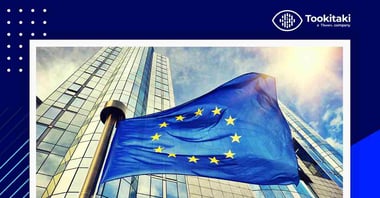The Fourth Money Laundering Directive - All You Need To Know
What is the 4th EU Money Laundering Directive (4AMLD)?
4th EU money laundering directive: The Fourth AML Directive is a legislation passed by the European Union and ratified by the European Parliament in 2015. It was implemented in all of the states of the European Union on 26th June 2017. The AML 4th directive was translated into the law of the United Kingdom on the same day through the Money Laundering, Terrorist Financing, and Transfer of Funds (Information on the Payer) Regulations (2016).
This AML 4th directive is an iteration, and, much like previous versions, the 4th EU money laundering directive works to protect the EU’s financial system from threats, such as money laundering and terrorist financing.
What Came Before the AML 4th Directive? A Brief History
What came before AML 4th directive?The first-ever Money Laundering Directive (1AMLD) was drafted and enacted by the EU in 1991. Its primary aim was to check drug-related offenses, and it also implemented requirements for financial institutions to verify their customers’ identities and report any suspicious financial activity.
After a few years, this legislation was revised and the 2AMLD was set in place in 2001. It aimed to align the EU’s Anti-money Laundering Framework with that of international organizations such as the Financial Action Task Force (FATF). The key improvement in the 2AMLD was that it expanded both the predicate offences in which money laundering could apply and identified high-risk businesses to monitor more closely.
In 2005, yet another revision was introduced, with the Third Anti-Money Laundering Directive. This aimed to expand the scope of AML by including certain non-financial businesses and professions into its purview, such as legal services or accountancy firms. The 3AMLD championed a risk-based approach (RBA) to Customer Due Diligence (CDD). This also paved the way for more complex and thorough processes, including Simplified Due Diligence (SDD) and Enhanced Due Diligence (EDD).
Introduction of the Anti Money Laundering 4th Directive (4AMLD)
Implemented in 2017, the anti-money laundering 4th directive is a new and improved iteration. It comes with safeguards to bolster many of the anti-money laundering provisions outlined in the 3AMLD. The AML 4th directive aims to curb illegal financial activity by urging financial institutions to increase their transparency, thereby taking more accountability if financial crimes do occur. The money laundering 4th directive also encompasses measures to bring the EU’s regulatory compliance standards up-to-par with the FATF’s latest guidelines, ensuring consistency in AML policies across the world.
Expanding the Scope of Obliged Entities
Previously, there were some firms and individuals that dealt in the financial industry (such as investment firms) who went unrecognized and were therefore unregulated by monitory bodies. These institutions or individuals are now known as “obliged entities” under the money laundering 4th directive. Thanks to this amendment, these entities now have to comply with the guidelines and regulations outlined in the Directive, including KYC and Customer Due Diligence (CDD) processes. Under the money laundering 4th directive, all credit and financial institutions, non-financial businesses and professions (DNFBPs), and gambling service providers must comply with, and be answerable to, the EU for their dealings.
Occasional transactions that are out of the ordinary (of €10,000 or more) are also included in the regulation and these must be reported to the authorities.
To sum up, the money laundering 4th directive has revisions to aid more transactions being monitored and CDD and KYC practices. It builds on and strengthens the risk-based approach introduced in 3AMLD.
AML 4th directive: A unique feature of the 4th EU money laundering directive is that it regulates e-money products for the first time. Some countries do have the discretion to make exceptions to these regulations - as long as certain base conditions are met.
Some of the main restrictions on the 4th EU money laundering directive are on the monthly transaction limit, which is currently €250 on instruments like prepaid cards. This amount, too, must be used only to purchase goods and services, and these cannot be anonymously funded. If any particular country chooses to loosen up their CDD requirements for e-money services, they must ensure that financial service providers carry out sufficient transaction monitoring to keep the risk levels low.
CDD must always be performed - a step cemented by the 4th EU money laundering directive. It preempts the suspicion of any potential money laundering, terrorist financing, or illegal financial activity. In addition, CDD must be conducted once again if there are any doubts or questions regarding the accuracy or credibility of the information gathered.
Ultimate Beneficial Ownership (UBO)
The anti-money laundering 4th directive dictates that the countries in the European Union now require bodies within their jurisdiction to keep track of ownership information and keep it up-to-date in a central registry. The aim is to keep this information accessible to authorities, obliged entities, and the public with a legitimate interest, such as NGOs, journalists, or researchers.
This iteration of the Directive also modifies the definition of an Ultimate Beneficial Owner (UBO). The key factor in deciding who the UBO still remains to own or control over 25% of the shares/voting rights of each legal entity. Anti-money laundering 4th directive, however, also allows for senior managing officials to be treated the same as beneficial owners in cases where they cannot clearly determine the criteria.
Beyond a Risk-Based Approach for Money Laundering 4th Directive
A central feature of the AML 4th directive is that it further emphasizes the necessity of a risk-based approach when it comes to AML. It strengthens RBA requirements while mandating obliged entities to assess risk and consider other factors, such as country or geographical location, products, delivery channels, or mode of transactions. All of these factors will lead to a risk assessment, which must be kept up-to-date and easily accessible to all regulators. Larger firms might also need to commission independent audits to ensure their AML procedures are in compliance with the Fourth Anti-Money Laundering Directive.
The Directive also puts checks on blanket exemptions that previously allowed the automatic use of Simplified Due Diligence (SDD). Firms now actively implement SDD procedures for low-risk customers, which are usually fewer in number, and use CDD or EDD wherever required.
Another salient feature of the 4th money laundering directive is that it puts in place a risk-based procedure to determine whether UBOs are Politically Exposed Persons (PEPs).
Higher, more diligent methods of data collection and risk assessment are carried out for these entities. Also, senior management approval is a prerequisite to carry out financial business of any kind with a PEP.
Read more about AML and fraud schemes in the COVID-19 era here.
Anti-Financial Crime Compliance with Tookitaki?



